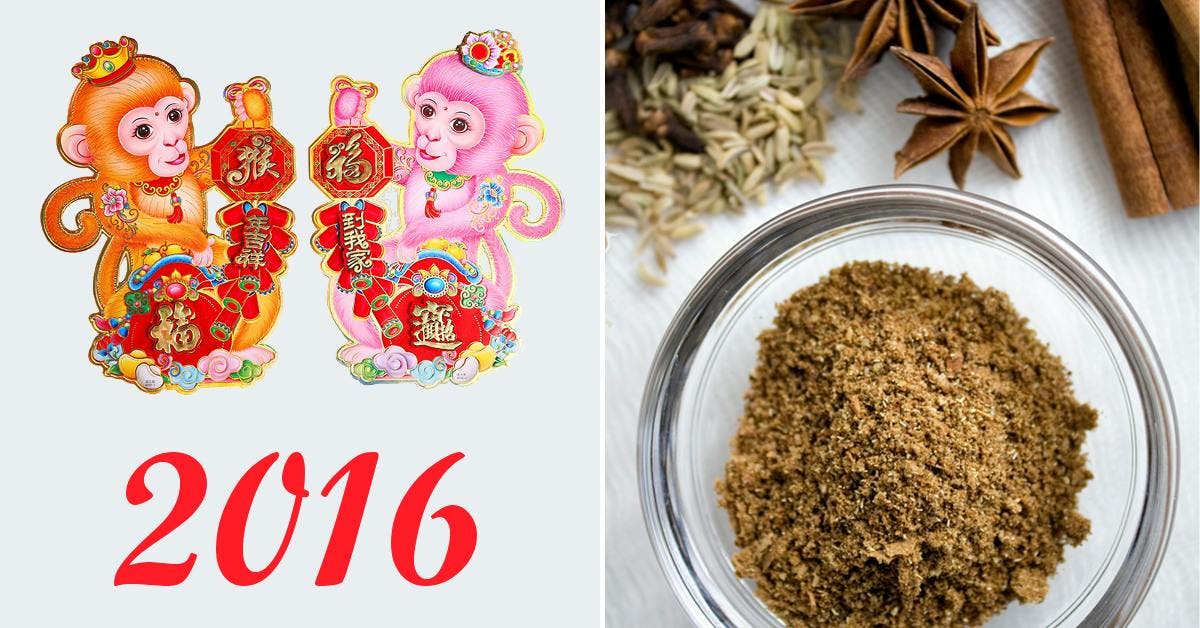
Spice things up for Chinese New Year
Chinese New Year Falls on Monday 8th February this year, with the ushering in of the year of the monkey. To help celebrate, our Botanicals Guide this month looks at Cassia – also known as Chinese cinnamon.
Cassia is indeed closely related to what we know as cinnamon, but is the product of the bark of a different species of tree, native to China, called the Cinnamomum cassia.
Cassia and ‘true cinnamon’ (which comes from the bark of the Cinnamomum verum tree) are both sold in both stick form, cassia being thick and rolled in one piece, cinnamon thinner and less solid, and powdered form, when it’s almost impossible to tell the difference bar undertaking chemical analysis.
The presence of cinnamaldehyde in both means they share the same bright, spicy, distinctively ‘cinnamon’ taste. Indeed, what is sold as ‘cinnamon’ in the US, UK and India for culinary purposes is in fact, more often than not, cassia.
Cassia and cinnamon are both credited with a range of health benefits, including helping those with diabetes control blood sugar levels, staving off cognitive impairment and inhibiting the onset of Alzheimer’s Disease, as well having anti-inflammatory and anti-bacterial properties.
One main difference between the two spices is that cassia is much cheaper than cinnamon, hence, perhaps it is the much more widely available – and it is the more common gin botanical of the two.
The cassia tree grows up to 10 or 15 m, with greyish bark and hard, elongated leaves that are 10–15 cm long and have a decidedly reddish colour when young. The trees have buds that appear similar to cloves, and have a mild, flowery cinnamon flavour. These are also used as spice in India and were once used by the ancient Romans.
Where ‘true cinnamon’ has a higher amount of eugenol, which is also the primary aromatic element in cloves, cassia contains coumarin, which has a scent similar to vanilla.
Cassia bark is a relatively common gin botanical, found in almost half of commercially available gins. It is, though, more usually found as a base note rather than as a primary aromatic, adding a complexity and balance without necessarily being separately discernible.
Cassia is a common ingredient in the spice mix known as Chinese Five Spice. While there are different variations, a common version of the mix includes star anise, cloves, sichuan pepper and fennel seeds alongside cassia or cinnamon. Try this recipe to make your own Five Spice blend that you can use in a myriad of Chinese and other recipes.
Chinese Five-Spice Blend
Ingredients
2 whole star anise
2 teaspoons Szechuan peppercorns (or generic peppercorns will do)
1 teaspoon cloves
1 teaspoon fennel seeds
1 cassia or cinnamon stick, broken into a few pieces, or 1 tsp of ground cassia or cinnamon
Method
In a dry pan over medium heat, toast the anise, peppercorns, cloves and fennel until fragrant. Swirl the pan gently and toss the seeds occasionally to prevent burning. Allow to cool.
Once cooled, grind the seeds along with the cassia or cinnamon in a pestle and mortar (or whizz in a spice or coffee grinder for about 20 seconds) until a fine powder is formed.
Store the mix in an airtight spice jar out of the light and it will store well for several months.







